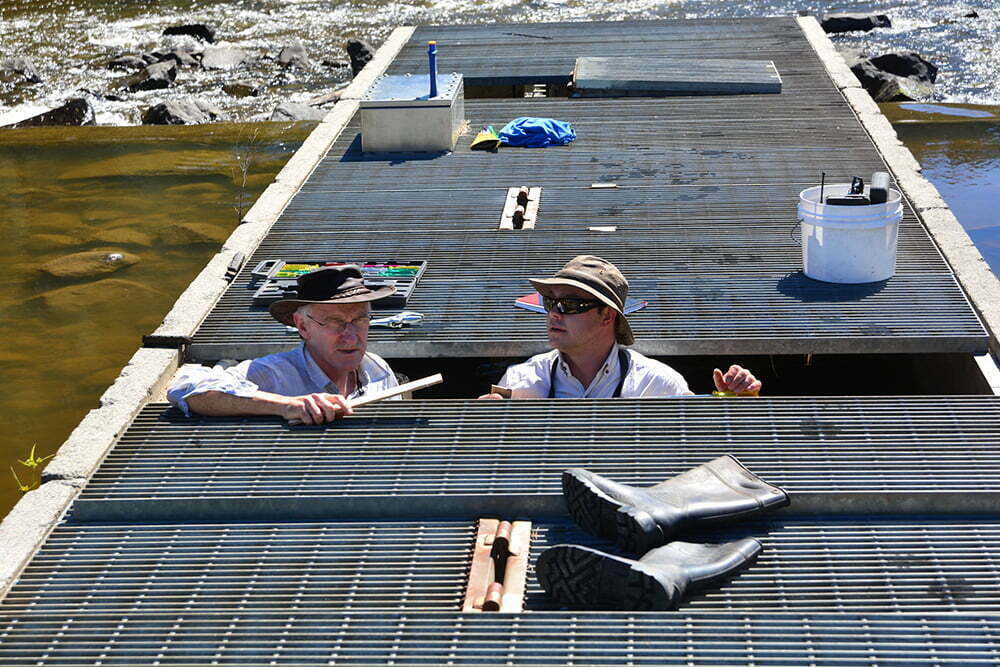Barriers to fish passage such as dams, weirs and road crossings are a key threatening process to native freshwater fish. Fish need to move for many reasons including to breed, maintain population diversity, access refuge areas during drought and to re-establish following disturbances.
The ACT has a number of barriers to fish passage and four of them have fishways to allow fish to move through the barrier. One of these is the vertical slot fishway constructed on the Casuarina Sands Weir on the Murrumbidgee River. However, monitoring of fish passage through the fishway undertaken in 2010 has shown that the fishway is not operating effectively at low flow levels. .
Recently, specialist fishway biologist, Dr Martin Mallen-Cooper visited Casuarina Sands to assess the fishway in order to make it functional once again. This involved looking at how the vertical slots inside the fishway affect water flow through the structure and how these could be modified to make it easier for fish to negotiate the fishway. During the assessment Dr Mallen-Cooper, assisted by the team at the ACT Government’s Conservation Research Unit trialled different wooden slot templates and assessed how these affected flow rates and velocities.
The best slot design will be fabricated in steel and inserted to make the fishway, restoring fish passage in the longer term. The assessment was funded by the Murray Darling Basin Authority as part of the Upper Murrumbidgee Demonstration Reach. The required modifications will be carried out by ACT Government. Ongoing monitoring of the fish in the Upper Murrumbidgee will help to assess the functionality of the fishway. We will keep you up to date on how the upgraded fishway performs!
<a href=”http://riversofcarbon click over here.org.au/wp-content/uploads/2015/05/Martin-mellan-cooper-visit-19-march-2015_2.jpg” data-rel=”lightbox-1″ title=””>
Assessing the new materials for the fishway vertical slots. Photo Lisa Evans
Want to know more about fish passage? Head to the Finterest website ‘Movement and Migration’ projects.
Thanks to Antia Brademann, Upper Murrumbidgee Demonstration Reach Facilitator for this story.

